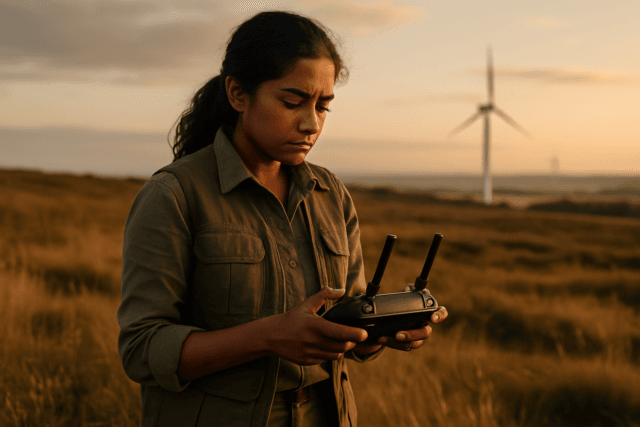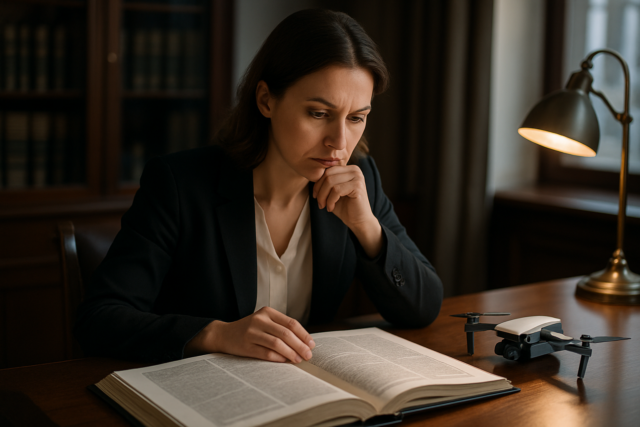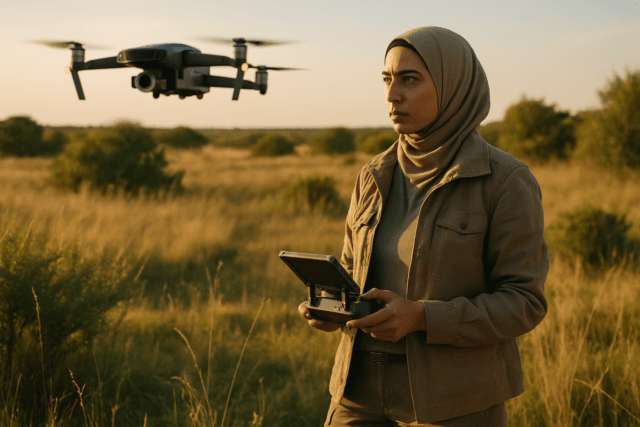Imagine the night sky transformed into a dynamic canvas, where hundreds or even thousands of luminous points dance in perfect harmony, forming intricate shapes, telling stories, and creating breathtaking visual spectacles. This is the magic of drone choreography for synchronized flight performances, a rapidly evolving field at the intersection of technology, art, and aviation. What once seemed like science fiction is now a reality, captivating audiences worldwide and redefining entertainment.
What is Drone Choreography?
Drone choreography refers to the meticulously planned and executed synchronized movement of multiple unmanned aerial vehicles (UAVs), commonly known as drones, to create elaborate aerial displays. These drones are typically equipped with bright LED lights, which are programmed to change colors and intensity, acting as “pixels” in the vast nocturnal canvas. The result is a stunning aerial ballet, capable of depicting logos, animations, 3D forms, and narrative sequences that far surpass the capabilities of traditional fireworks.
The concept gained significant traction following demonstrations like Vijay Kumar’s 2012 TED Talk, showcasing autonomous robots flying in sync, and Ars Electronica’s first public illuminated drone flight in Linz, Austria, later that year. Tech giants like Intel further popularized the art form with projects such as “Drone 100” in 2015, which set a world record for the most UAVs in flight at once, synchronized to classical music.
The Technology Behind the Spectacle
Achieving the seamless, precise movements seen in synchronized drone shows requires a sophisticated blend of hardware and software. At its core, the technology ensures that each drone knows its exact position and trajectory relative to all other drones in the swarm.
Precision Navigation and Communication
Each drone is equipped with advanced navigation systems, primarily relying on Global Positioning System (GPS), often augmented by other Global Navigation Satellite Systems (GNSS) like GLONASS or Beidou, for general positioning. However, for the “inch-level precision” crucial for complex choreography and avoiding collisions, these systems are typically enhanced by ground stations or Real-Time Kinematic (RTK) technology. RTK significantly refines positional accuracy, allowing drones to maintain tight formations even in challenging conditions.
A central control system manages the entire fleet, communicating with each drone in real-time via robust radio signals. This low-latency communication is vital to prevent synchronization errors or collisions, as drones constantly adjust their positions based on the movements of their neighbors and the overarching flight plan.
Specialized Drones and Lighting
The drones used for these performances are often specially designed quadcopters, prioritizing agility, maneuverability, and stability. They are typically smaller and lighter than their counterparts used for other applications, which aids in dynamic movements. Crucially, they house powerful, energy-efficient LED lights capable of emitting a wide spectrum of colors, transforming them into individual pixels in the sky. Some specialized “pyrodrones” can even incorporate pyrotechnic effects, adding another dimension to the aerial display. Popular drone models include the DJI Phantom, DJI Inspire, and Intel Shooting Star, though many companies develop custom-built solutions.
The Art of Choreography and Programming
The true artistry of drone light shows lies in the choreography, which is meticulously designed and programmed long before the drones take flight.
From Concept to Flight Path
The process begins with a creative design team developing a storyboard, outlining the desired images, animations, and transitions. These visual concepts are then translated into 3D animations using specialized software such as Houdini, Blender (often with plugins like SkyBrush), or dedicated Drone Show Creator platforms.
During this stage, 3D animators define the precise flight paths for each drone, considering spatial coordinates, timing, and the specific colors each LED will display at different moments. This software also incorporates safety measures, such as ensuring adequate spacing between drones to prevent mid-air collisions, and restricting flights within predefined geo-fenced boundaries. The programming often synchronizes the drone movements and light changes with accompanying music or other audio cues, creating an immersive sensory experience.
Pre-Flight Preparation and Execution
Before a show, rigorous pre-flight testing is essential. This includes battery checks, software updates, and synchronization tests to ensure operational reliability. Each drone receives its individual flight plan or mission, which it autonomously follows from takeoff to landing. On the day of the event, a dedicated team, including skilled pilots and safety officers, oversees the operation from a ground control station, ready to intervene if necessary.
Applications and Benefits of Drone Performances
Synchronized drone performances have rapidly expanded beyond novelties, becoming a staple in diverse entertainment and marketing contexts.
Entertainment and Events
Drone shows are increasingly featured at major events like festivals, sporting events (including the Olympics and Super Bowl halftime shows), corporate gatherings, and national celebrations. They can deliver customizable visuals, tell intricate stories, or convey congratulatory messages, making them a versatile tool for engaging audiences. From creating animated dragons to spelling out QR codes, the creative possibilities are vast. Recent examples include shows choreographed to classical music, depicting nature-themed visuals like birds and flowers.
Eco-Friendly Alternative
A significant advantage of drone light shows is their environmental friendliness compared to traditional fireworks. Powered by rechargeable batteries, drones emit no smoke, chemical residues, or loud noises, making them a more sustainable and less disruptive option. This also makes them suitable for audiences sensitive to sound, such as children, pets, or individuals with sensory sensitivities. Many cities and organizations are now choosing drones over fireworks due to these environmental and safety benefits.
Economic and Artistic Versatility
While the initial investment in drone technology and programming can be substantial, drones are reusable, potentially leading to long-term cost savings compared to single-use fireworks. Their precision also reduces the risk of accidents and property damage. Artistically, drones offer a far greater range of effects and storytelling potential, allowing for sophisticated choreography in environments where fireworks would be prohibited.
Challenges and Safety Considerations
Despite their appeal, drone light shows present significant operational and regulatory challenges that demand meticulous planning and adherence to safety protocols.
Regulatory Compliance and Airspace Management
Drone shows fall under aviation regulations and are subject to strict rules set by civil aviation authorities in each country. Organizers must obtain specific permits and licenses, often requiring detailed flight plans, proof of pilot proficiency, and drone certification. Key restrictions include flight ceiling limits (often 400 feet above ground level without extensive permits) and strict avoidance of restricted airspaces, particularly near airports. No-fly zones are established around performance venues to prevent collisions with manned aircraft.
Site Assessment and Environmental Factors
Prior to any show, a detailed site assessment is crucial. This involves identifying safe zones for spectators, ensuring they are kept at a designated distance (e.g., 200 meters) from the drone’s operational flight areas. Environmental factors such as wind speed, precipitation, and visibility are thoroughly assessed, with strict protocols in place for adverse weather conditions that could compromise safety or performance. A sterile restricted access area on the ground is also required for takeoff and landing.
Technical Reliability and Emergency Protocols
While advanced technology minimizes risks, technical challenges such as battery life limitations, potential radio frequency interference, and communication security remain. Drones are equipped with fail-safe features, programmed to return to a launch site or land safely in case of technical issues. On-site safety personnel, along with clear emergency protocols, are essential to manage unforeseen incidents, including technical failures or changes in weather conditions.
The Future of Drone Choreography
The field of drone choreography is in a constant state of innovation, with exciting advancements on the horizon. The global market for drone light shows is projected to experience substantial growth, driven by technological progress and increasing demand for unique, eco-friendly entertainment experiences.
AI, Augmented Reality, and Interactivity
Integration with artificial intelligence (AI) and machine learning is poised to revolutionize drone synchronization, enabling drones to adapt in real-time to changing conditions, learn from past performances, and optimize their movements. This could lead to even more complex and dynamic choreographies that adapt fluidly during a show.
The future also holds the promise of integrating drone shows with augmented reality (AR) and interactive elements, allowing audiences to potentially influence performances and create truly immersive experiences.
Larger Scales and Broader Applications
As drone technology continues to advance, expect to see even larger-scale performances involving thousands of drones, creating more intricate and detailed visuals across the sky. Beyond traditional entertainment, drones are predicted to find new applications in advertising, public awareness campaigns, and even personalized events like marriage proposals. As environmental concerns persist, drone light shows are likely to become the standard for aerial celebrations, offering a modern, innovative, and sustainable alternative to traditional displays.
In conclusion, drone choreography has emerged as a captivating art form, blending sophisticated aerospace engineering with creative expression. As technology progresses and artists push the boundaries of imagination, the synchronized ballet of drones will continue to redefine the landscape of live entertainment, transforming our skies into stages for awe-inspiring performances.





